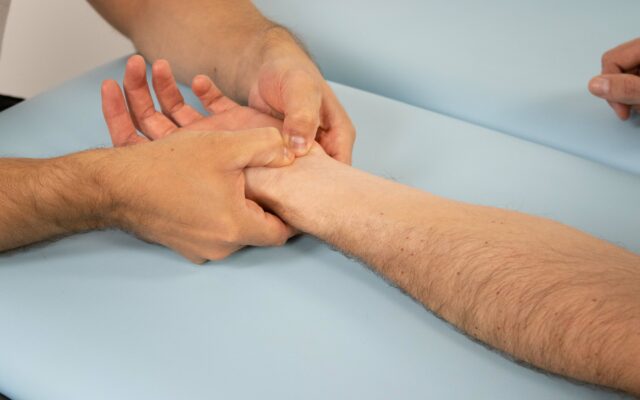Learn
Carpal Compression Test | Carpal Tunnel Syndrome
The definitive diagnosis of Carpal Tunnel Syndrome requires nerve conduction testing and or EMG testing BUT these are costly and not readily available to many clinicians. Therefore, physical examination tests such as the Tinel sign and Phalen’s test have been developed but they don’t yield high accuracy. More recently, the carpal compression test was proposed and showed higher diagnostic accuracy over the Tinel sign and Phalen’s test. Almasi-Doghaee et al. (2016) report a sensitivity of 80.6% and specificity of 52.9% which translates to rather poor likelihood ratios and which is why we still regard the clinical value as weak.
To conduct the test, the patient’s forearm is supinated and the examiner compresses the carpal tunnel between the thenar and hypothenar eminence for 30 seconds.
The test is considered positive if symptoms such as paresthesia, numbness, and dull pain in the median nerve territory are reproduced.
Other common tests to assess Carpal Tunnel Syndrome are:
- Tinel’s Sign at the Wrist
- Flick Sign
- Clinical Prediction Rule for CTS
- Phalen’s Test
- Upper Limb Neurodynamic Test 1 (ULTT1)
- Hand Elevation Test
21 OF THE MOST USEFUL ORTHOPAEDIC TESTS IN CLINICAL PRACTICE

References
Like what you’re learning?
BUY THE FULL PHYSIOTUTORS ASSESSMENT BOOK
- 600+ Pages e-Book
- Interactive Content (Direct Video Demonstration, PubMed articles)
- Statistical Values for all Special Tests from the latest research
- Available in 🇬🇧 🇩🇪 🇫🇷 🇪🇸 🇮🇹 🇵🇹 🇹🇷
- And much more!








